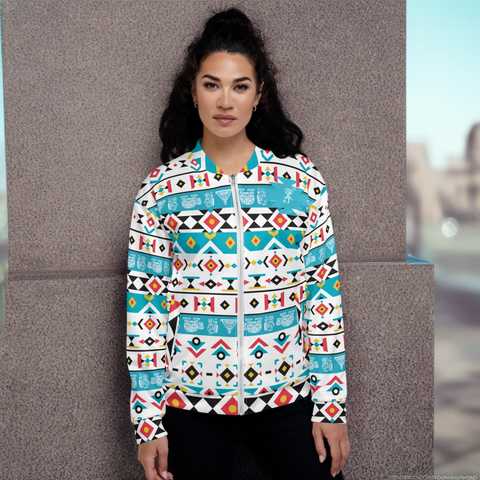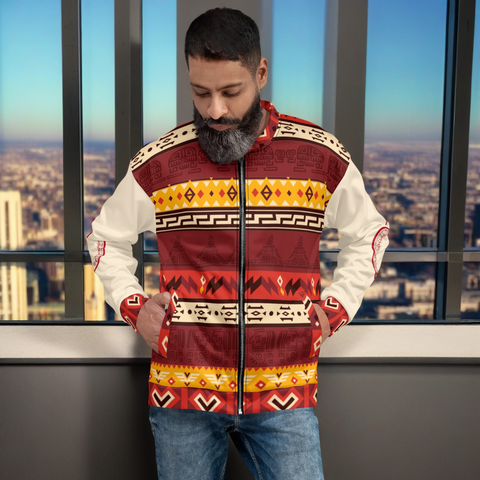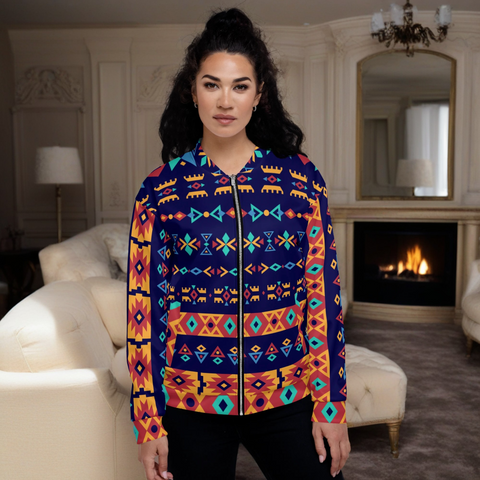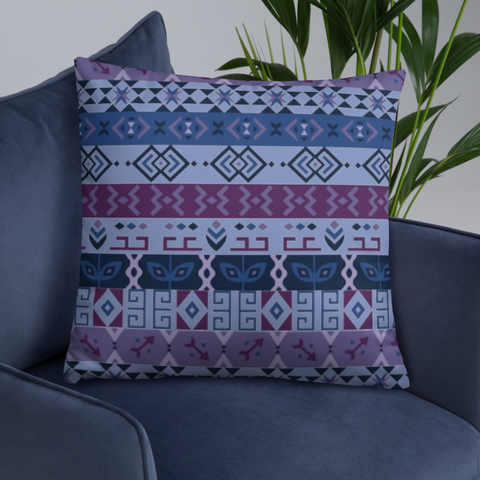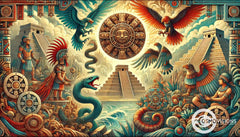Unveiling the Valor of the Aztec Warrior: Jaguar Warriors and Their Role in Aztec Society
Posted by Massimiliano Geraci

Have you ever wondered about the fierce fighters of the Aztec civilization? Many people are curious about who protected and fought for one of history’s most fascinating societies, particularly the organization and might of the Aztec army. One fact stands out: among their ranks, Jaguar Warriors stood as symbols of power and courage.
This article will explore their vital role within the Aztec empire—their training, battles, and how they shaped history.
We’ll examine these elite warriors’ lives more closely, uncovering what sets them apart in battle and society. From their unique armor to their significant role in warfare strategies, we aim to provide clear insights that answer all your questions about Jaguar Warriors.
Ready to learn more? Let’s begin!
Key Takeaways
-
Jaguar warriors were elite fighters in Aztec society who wore jaguar skins into battle, symbolizing their power and high rank. They captured prisoners during wars to gain honor and social standing.
-
From a young age, Aztec boys trained for combat in special schools, aiming to become warriors like the Jaguars. Their training included mastering weapons and learning about military strategy.
-
The Aztecs' military structure was complex, and Jaguar Warriors played a key role. Success on the battlefield could elevate a commoner to noble status.
-
Jaguar Warriors used various weapons and armor, including macuahuitl swords with obsidian blades and quilted cotton suits for protection. Their gear also had spiritual significance.
-
Their participation in battles showed their strategic importance to the Aztec Empire. They participated in notable campaigns like the Siege of Tenochtitlán and Flower Wars, capturing enemies for sacrifice to please their gods.
The Role of Jaguar Warriors in Aztec Society
Jaguar warriors were among the elite Aztec warriors, holding a high rank in Aztec society. They were noble fighters known for their bravery and battle skills. These warriors wore special uniforms that included helmets and jaguar hides, making them easy to spot.
Their role went beyond just fighting; they captured prisoners during war to gain honor and improve their social standing. This was crucial because success in battle could change a commoner’s life forever.
Being part of the military was a big deal in Aztec culture. From a young age, every male learned how to fight. For those who became Jaguar warriors, it meant public recognition and valuable gifts from the community.
They symbolized strength and courage, playing key roles not only on the battlefield but also in ceremonies and religious rituals. Their presence reminded everyone of the importance of warfare and valor within Aztec society.

Training and Education of Jaguar Warriors
Aztec boys started their journey to becoming warriors at a young age. These schools were part of the broader warrior societies that structured the training and development of young Aztec boys. They received training in two types of schools: Telpochcalli for the commoners and Calmecac for nobles. This schooling was serious business.
Boys learned from experienced warriors, mastering skills necessary for battle. Their education covered everything from handling obsidian swords to understanding military strategy. The aim was clear: prepare them to defend their city and capture prisoners in wars. Every boy’s destiny was shaped by the shield and arrow he received at birth. This formal education wasn’t just about fighting; it also instilled discipline, courage, and loyalty - traits Aztec society values. Students practiced with wooden clubs and wore quilted cotton as armor during training sessions, getting used to what they would face on the battlefield.
By age 20, these boys were ready to join the ranks of full-time warriors if they proved themselves capable. Their passage into this elite group marked a change in status and affirmed their place within the intricate tapestry of Aztec culture.
Hierarchical Structure and Ranks
In the heart of Aztec society, the military’s structure was as complex as it was fascinating. This complexity reflected not just in their strategy and tactics but also in how they organized their fighters, from the common foot soldier to the esteemed Jaguar warriors. Let’s examine the layers within this intricate system, shedding light on the roles that determined the course of Aztec military ventures.
Rank Description Path to Advancement Common Warrior Foot soldiers comprising the base of the Aztec military. Displaying valor in battles could lead to higher ranks. Eagle and Jaguar Warriors Elite fighters dressed in respective animal skins, symbols of their bravery and prowess. Securing four captives in battle granted entry into these noble ranks. “The Shorn Ones” The pinnacle of the warrior society, marked by their distinctive haircuts and unmatched skill. Achievement in warfare and extraordinary acts of bravery were essential. Nobles Members of the noble class who could also serve in the military, holding higher ranks due to their status. Being born into nobility or elevated for exceptional military service.
Among these ranks were also the Aztec warrior priests, who held both military and religious responsibilities.
This structure showcases the potential for upward movement based on merit and the importance of military achievement in Aztec society. Warriors could ascend from commoners to nobles, embodying the society’s values of courage and prowess in combat. This system encouraged all to strive for greatness and honor, binding the society with a common goal—excellence in service to their people and their deities. Through this lens, we glimpse the spirit of the Aztec people, fierce in battle yet deeply rooted in their traditions and societal roles.
Weapons and Armor Used by Jaguar Warriors
Moving from the structured world of hierarchical ranks, we now explore the tools and protection that set Jaguar Warriors apart. Their gear was not just for battle; it also held deep spiritual meaning.
These weapons and armor were often used by veteran warriors who had proven their skill and bravery in numerous battles.
Jaguar warriors wielded a variety of weapons:
-
The macuahuitl, a wooden sword with sharp obsidian blades, could cut through enemy armor.
-
They used the atlatl for longer range to hurl darts with deadly accuracy.
-
The tepoztopilli, a type of spear, helped them keep foes at a distance.
-
Close combat saw the use of cuauhololli, a strong club that could break bones with ease.
Their defense was as formidable as their offense:
-
Armor included quilted cotton suits thick enough to stop arrows and spears.
-
They donned helmets made from hardwood, shaped like animals or gods to scare foes and protect their heads.
-
Shields were essential; made of wood and covered with hide, they bore emblems signifying rank and achievements.
-
Suits made from jaguar skins not only offered protection but also connected warriors with Tezcatlipoca, a god of war.
Clothing and emblems played dual roles in identification and spiritual practice:
-
Tunics under their armor displayed their status within the warrior class.
-
Red cords around their arms signaled readiness for battle but marked them as moving prayers to Aztec deities for victory.
These items were far more than mere tools of war; they were extensions of the warrior’s body and soul, marrying function with deep cultural significance.

Strategic Importance in Aztec Warfare
The weapons and armor wielded by Aztec Jaguar Warriors led to their key roles in Aztec battles. These warriors held the front lines on the battlefield, showing great courage and strategy. They marched up to 32 kilometers daily on vast road networks, moving quickly to surprise enemies or defend cities.
Fortifications like those at Oztuma acted as shields against invasions, showcasing military intelligence.
Aztec leaders used political warfare and Flower Wars to gain territory and capture prisoners for sacrifice, proving their dominance. Depending on the threat level, Aztec forces could swell to 700,000 men.
This adaptability and strategic placement of troops underlined Jaguar Warriors’ central role in maintaining Aztec power across central Mexico.
Supplementary insights on Jaguar Warriors
Explore the deep cultural roots and powerful symbols that Jaguar Warriors carried in their hearts. Among these warriors were the Jaguar Knights, who were known for their exceptional skills and bravery. Peep into their world to see how they stood out from the rest. Feel the spirit of ancient warriors call you to learn more.
Cultural and Religious Significance
Jaguar warriors held a deep place in the heart of Aztec culture. They did not just fight in battles; they were key to religious festivals too. Similarly, the Eagle Warrior also played a crucial role in religious festivals and ceremonies. The Aztecs believed that the sacrifice of war prisoners was essential to please their gods.
This made jaguar warriors very important, as they captured these prisoners during wars. Their victories brought honor to themselves and ensured the continuation of the world, according to Aztec beliefs.
The respect for fallen jaguar warriors was vast. After a warrior died, people spent 80 days mourning them. They followed special rites and rituals, showing how deeply rooted these fighters were in both societal and spiritual realms.
Every capture and every sacrifice by a jaguar warrior strengthened the bond between the physical and divine worlds for the Aztecs, showcasing their unwavering faith in their deities like Huitzilopochtli, the sun god who demanded bloodshed for continued life on Earth.
Differences Between Jaguar Warriors and Eagle Warriors
In the vibrant tapestry of Aztec society, the Jaguar and Eagle warriors stood as emblems of valor and spiritual might, each embodying the profound connection between martial prowess and celestial favor. Their differences, while subtle, reveal the intricate social and spiritual layers that defined this intricate civilization.
Aspect Jaguar Warriors Eagle Warriors Uniform Wore pelts of jaguars, symbolizing the night, stealth, and the earth Adorned in eagle feathers, representing the sky, the sun, and spiritual ascension Symbolism Embodied the ferocity and power of the jaguar, a nocturnal hunter Symbolized the vision and freedom of the eagle, a day-time predator Role in Society Considered noble warriors, part of the elite military and social class Equally esteemed, with roles that often crossed into religious and ceremonial duties Path to Status Required to capture four enemies in battle to earn their rank Had the same requirement, capturing four foes on the battlefield Weapons and Armor Utilized weapons like the macuahuitl and shields, alongside their distinct jaguar hide armor Wielded similar weaponry, with the addition of eagle feathered suits enhancing their appearance
Both warrior classes underscored the Aztec emphasis on martial achievement interwoven with spiritual devotion. Through their attire and deeds, each celebrated the cosmic balance between the terrestrial and the celestial, night and day. Moving forward, we delve into the notable campaigns and battles that further illustrate the indomitable spirit of the Jaguar warriors.
Notable Campaigns and Battles
Jaguar warriors were fierce on the battlefield, embodying the Aztec spirit of courage and strength. Their roles in key battles and campaigns showcased their might and strategic importance across Mesoamerica.
-
Siege of Tenochtitlán: This intense battle marked a turning point for the Aztec Empire. Jaguar warriors fought bravely, using smoke signals for coordination. They launched assaults at dawn, employing ambush tactics.
-
Battle of Otumba: Aztec forces faced the Spanish and their native allies desperately fighting for survival. Jaguar warriors used atlatls skillfully, striking fear into their enemies with powerful hand-to-hand combat.
-
Flower Wars: These were ritual battles that trained warriors in combat without intending to conquer lands. Jaguar warriors sought to capture foes for religious sacrifices, demonstrating both martial skill and spiritual devotion.
-
Defense of Azcapotzalco: When rival city-states attacked, Jaguar warriors defended Azcapotzalco with valor. Using terrain knowledge, they turned the tide, setting up ambushes that surprised enemy soldiers.
-
Campaign against Tlaxcala: The Aztecs' enduring enemy was Tlaxcala. Jaguar warriors often raided this region to weaken its resistance and capture prisoners for religious ceremonies.
Each campaign and battle in which Jaguar warriors participated highlighted their critical role within the Aztec military framework and underscored their contributions to the empire's expansions and defense strategies.

Legacy and Historical Impact of Jaguar Warriors
After exploring their notable campaigns and battles, we see the lasting mark of Jaguar Warriors on history. Their bravery and skill live on in stories passed down through generations.
These warriors stand as symbols of courage in Aztec culture, inspiring people even today.
Their legacy goes beyond the battlefield. Artists and writers continue to celebrate these elite fighters in paintings, books, and songs. Museums worldwide display Aztec weapons and armor, giving us a glimpse into their lives.
This keeps the spirit of Jaguar Warriors alive for all to see.
The valor of Jaguar Warriors shapes our understanding of courage across time.
Conclusion
The Jaguar Warriors bring life to the rich tapestry of Aztec culture. They were more than fighters; they shaped their society. Through bravery and skill, they climbed social ranks, showing us how warfare and belief fused in ancient Aztec life.
Their legacy teaches us about strength, honor, and the deep roots of community values among the Aztecs. This glimpse into their existence opens up a world where valor reigned supreme.
Discover more about the intriguing aspects of Aztec culture by exploring our in-depth article on Aztec cuisine.
FAQs
1. Who were the Jaguar Warriors in ancient Aztec society?
Jaguar Warriors were fierce fighters in Aztec armies. They wore skins of jaguars and earned their rank by capturing enemies during battles. These warriors held a high status in Tenochtitlan, the heart of the Aztec empire.
2. How did one become a Jaguar Warrior?
To become a Jaguar Warrior, an Aztec soldier had to capture many enemies from battles. It was not easy; only the bravest and strongest could do it. Training started young at special schools, often between ten and twenty years old.
3. What role did these warriors play in their community?
Apart from fighting, Jaguar Warriors helped protect merchants and cities. They carried important supplies for battles and stood as symbols of power and bravery among their people.
4. Did becoming a warrior change one's place in society?
Yes! Becoming a warrior, especially a Jaguar Warrior, could lift someone's social status greatly... Even commoners could rise up if they proved themselves on the battlefield.
5. Were there other types of warriors in ancient Aztec culture?
Indeed! Besides Jaguar Warriors, there were Eagle Warriors who also wore impressive costumes that looked like eagles. Both groups were part of elite military units highly respected throughout the empire.
6. How did warfare affect daily life for the Aztecs?
Warfare was central to daily life. Young boys learned about fighting early on because successful wars meant more power and wealth for everyone. Through these conflicts, fallen warriors gained honor by serving their gods even after death.





